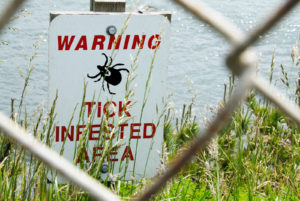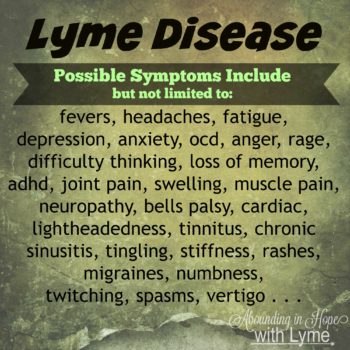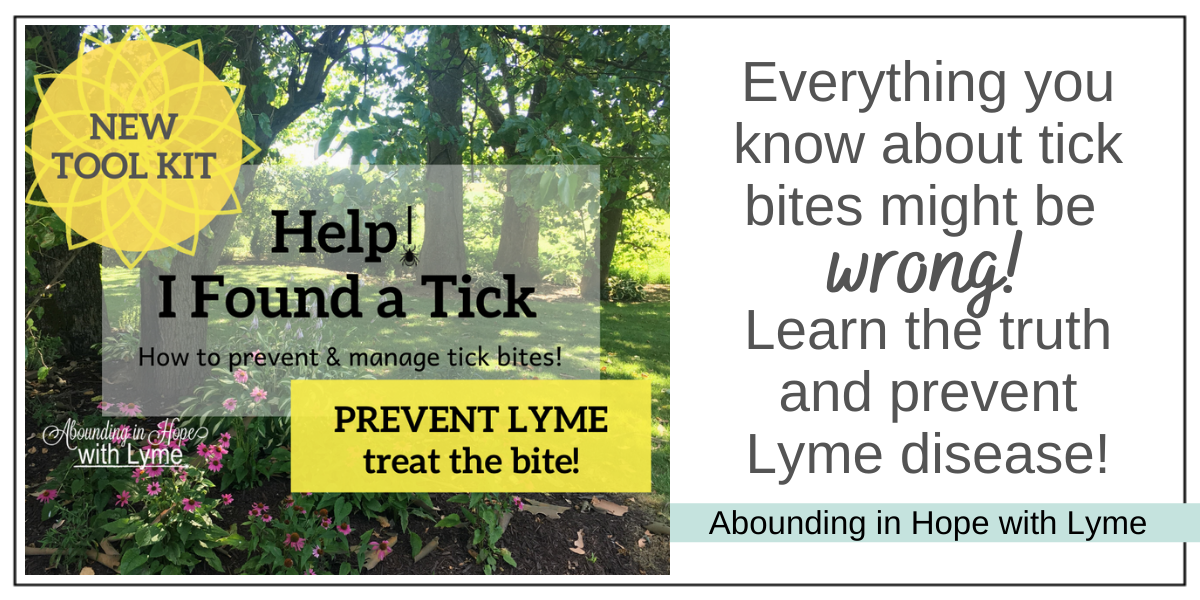Each year as the weather grows warmer our exposure to tick-borne diseases increases. In recent years ticks have become more of a threat year-round, but each Spring nymph ticks are in abundance. Because nymph ticks are only the size of a dot it’s difficult to know if you’ve bit. As we come back out of our homes and get back into our outdoor routines, caring for our yards, walking our dogs and hiking, how are we to protect ourselves from Lyme Disease?
Disclaimer: This information is for educational purposes only. It is not intended to replace or supersede patient care by a healthcare provider. If you suspect the presence of a tick-borne illness, you should consult a healthcare provider who is familiar with the diagnosis and treatment of tick-borne diseases.
According to the CDC, there are over 300,000 new cases of Lyme disease each year. This number only reflects those cases which are reported and misses the false negative cases as well as those that go undiagnosed due to improper medical diagnosis or because a tick is not seen.
Are you worried about how to protect yourself from Lyme Disease and the many other vector-borne diseases that have become so prevalent?

[bctt tweet=”When it comes to Lyme Disease, prevention is better than a cure because there isn’t a cure.” username=”aboundinginhope”]
Prevention is better than a cure because there is no cure.
Lyme testing is extremely inaccurate making the diagnosis of Lyme Disease extremely difficult. This is partly because symptoms mimic so many different diseases. Without the tale-tell sign of a bulls-eye rash, you may go undetected. Many who are bit and don’t get the initial symptoms, which indicate an infection, can end up with a lifetime of pain and suffering.
Only 50% of Lyme infections produce a rash. Only 50% of those produce a classic bulls-eye rash. Dr. Richard Horowitz
Oftentimes, a new Lyme infection does not present symptoms for months or even years down the road, depending on the strength of the immune system. Other times, corkscrew-shaped Lyme spirochetes move out of the bloodstream and drill themselves into the tissues and joints allowing the bacteria to evade detection. Read How Lyme Disease Hides From the Immune System
Be very careful to avoid being bitten by ticks at all costs.
Nowadays a Lyme infection is not the only infection to be wary of but it is the only one your doctor might check for. The black-legged deer tick carries many infections such Babesia WA-1 Duncani, Babesia Microti, Ehrlichia, Bartonella, and most recently in the news the deadly Powassan Virus which has no treatment available. Other ticks carry bacterial infections, viruses, and parasites.
[bctt tweet=”Nowadays a Lyme infection is not the only infection to be wary of but it is the only one your doctor might check for” username=”aboundinginhope”]
What You Can Do to Avoid Lyme Disease and Other Tick-borne Infections
1. Boost your immune system. Honestly, our immune system can either make or break us. Eat and drink as healthy as you can. Get plenty of sunshine to increase your vitamin D levels, eat plenty of vegetables, lean grass-fed meats and good healthy fats like Olive Oil, Avocado, and fresh wild caught fish. I’ve heard eating garlic and onions can deter ticks and other biting insects. They might deter your friends too but at least you’ll be protected.
2. Reduce stress. Many people can contract a vector-borne infection but because they are healthy and their immune system strong they can either get rid of the infection on their own or they might carry the infection without symptoms. If a stressful life event occurs or the immune system is compromised the infection will come out full force and can be devastating. It is harder to diagnose the cause of this type of infection because you may not recall a tick bite.

3. Stay on the Path. Avoid obvious areas where ticks would be such as tall grasses, leaf piles, and wooded areas. Walk in the center of trails. While some areas put you most at risk of contracting infection, quite honestly you can be at risk for tick bites in your very own yard. Keep your lawn neatly mowed to prevent ticks from hanging out in your grass or up near your home.
Be aware that nymph ticks start out on small animals like mice, squirrel and even birds. Understand that birds can drop ticks as they fly by and ticks can fall from trees even though you will read all over the internet that they cannot. As a personal example, I had a deer tick fall on me as I was sitting under my tree in the front yard. Thankfully I saw that one and it didn’t have the opportunity to bite me.
4. Dress appropriately. Wear light colors in order to spot ticks more easily. Wearing long pants and long-sleeved shirts will protect your skin from possible tick attachment. Wearing your socks on the outside of your pants will also ensure that ticks won’t crawl up your pants leg. I know this doesn’t express the greatest fashion statement but the alternative is too great to care.
5. Use Insect Repellent. It’s recommended that you use DEET on your skin, I personally don’t but you could. I opt for essential oil based tick repellent. I have used many different natural bug sprays and including blends that I made myself with Young Living Essential Oils. For Mosquito protection alone Lemongrass mixed with water or witch hazel in a dark glass bottle works very well for my family. I recycle the small bottles from our herbal tinctures, they’re small enough to keep in my purse.
Here’s My Tick & Bug Spray Recipe:
Fill a 4 oz. glass amber bottle 1 tsp witch hazel, vodka, or even white vinegar
Add 10-15 drops each of Geranium, Lemongrass, Lavender, and Citronella.
Shake gently and spray where needed.
Of course, you can make this in a much larger batch. Other oils that you can include are Purification, Peppermint, and Eucalyptus. I’ve also seen recipes where you substitute sweet almond oil for the liquid. Do some research and find one that you’re comfortable.
Most recently, I’ve seen a number of tick repellents on the market that are natural and effective.
6. Use Permethrin on your shoes and clothing. Never use permethrin on your skin! Spray your shoes and clothing and let them dry for at least 24 hours before you go on your outing.
7. Shower soon after being outdoors. This can help prevent ticks which are crawling on you from attaching, but not always.
8. Do a Tick Check. Do a full body check right after returning indoors before and after your shower. Use a hand-held mirror to check areas you can’t reach and be sure to ask someone to thoroughly check your hair and scalp.
Parents, check your children carefully, looking under arms, in and around their ears, inside their belly button, behind the knees, between the legs, private areas, around the waist and especially throughout the hair and on their head. Thoroughly check every inch of skin, especially warm, dark areas where ticks prefer.
9. Throw your clothes in the dryer immediately after returning from outside. Dry your clothes on high and keep them in for at least 15-20 minutes. The heat will kill any ticks that are crawling around on them. Be sure to check any gear that you’ve taken with you on your outdoor adventures.
10. Check Your Pets. Don’t forget to check your beloved pets. Remember that your pets can bring ticks right into your home and if you allow them on your furniture you’ve exposed yourself further. Chemical tick applications and collars are no guarantees. While you may not have found a tick on you during your check one could attach afterward from your pet. Finally, just because you didn’t find a tick on you, it doesn’t mean that you are in the clear, most people with chronic Lyme Disease never recall a tick bite.
Throughout the Spring, Summer and Fall months it’s very important to be extra observant about any symptoms that you may have that could indicate an infection from a tick or other insect.
KEEP TRACK OF SYMPTOMS
Keep track of fevers, joint or muscle pain that you don’t normally have, flu-like symptoms (especially during the summer), rashes of any type but especially if they are a bulls-eye. If you’re keeping a medical notebook, such as the one I shared with you in my post The Most Important Notebook You’ll Ever Keep, write down anything suspicious. This could help you determine if your risk of having a tick-borne infection is reasonable.
When to Seek Out Medical Care
ILADS physicians are now recommending treatment for every tick bite because of the vast amount of infections one tick can carry (ILADS Treatment Guidelines).
This can be very difficult, especially if you spend a great deal of time in areas where your risk of exposure is greater. There are more natural ways to treat but antibiotics have been proven to completely cure an early infection IF given the proper dosage. Please be very persistent about getting the right dose of antibiotics and if your doctor won’t treat you correctly then immediately find one who will or find a holistic doctor.
One last thing, though it’s controversial, some doctors and researchers believe that Lyme Disease is a sexually transmitted disease, can be passed on from mother to baby during pregnancy as well as through breastfeeding and has become a problem in our blood supply.
Knowledge is power and will give you the tools you’ll need to continue to enjoy the great outdoors while still protecting yourself and your family.
YOUNG LIVING: If you’re interested in Young Living Oils, I’d love to help you. You can purchase them here Order Young Living and if you have any questions just send me an email.
LYME LINKS:
A Quick Look At Lyme Disease
Testing for Lyme Disease
Lyme Disease & Co-Infection Systems
International Lyme and Associated Diseases Society (ILADS)






Leave a Reply